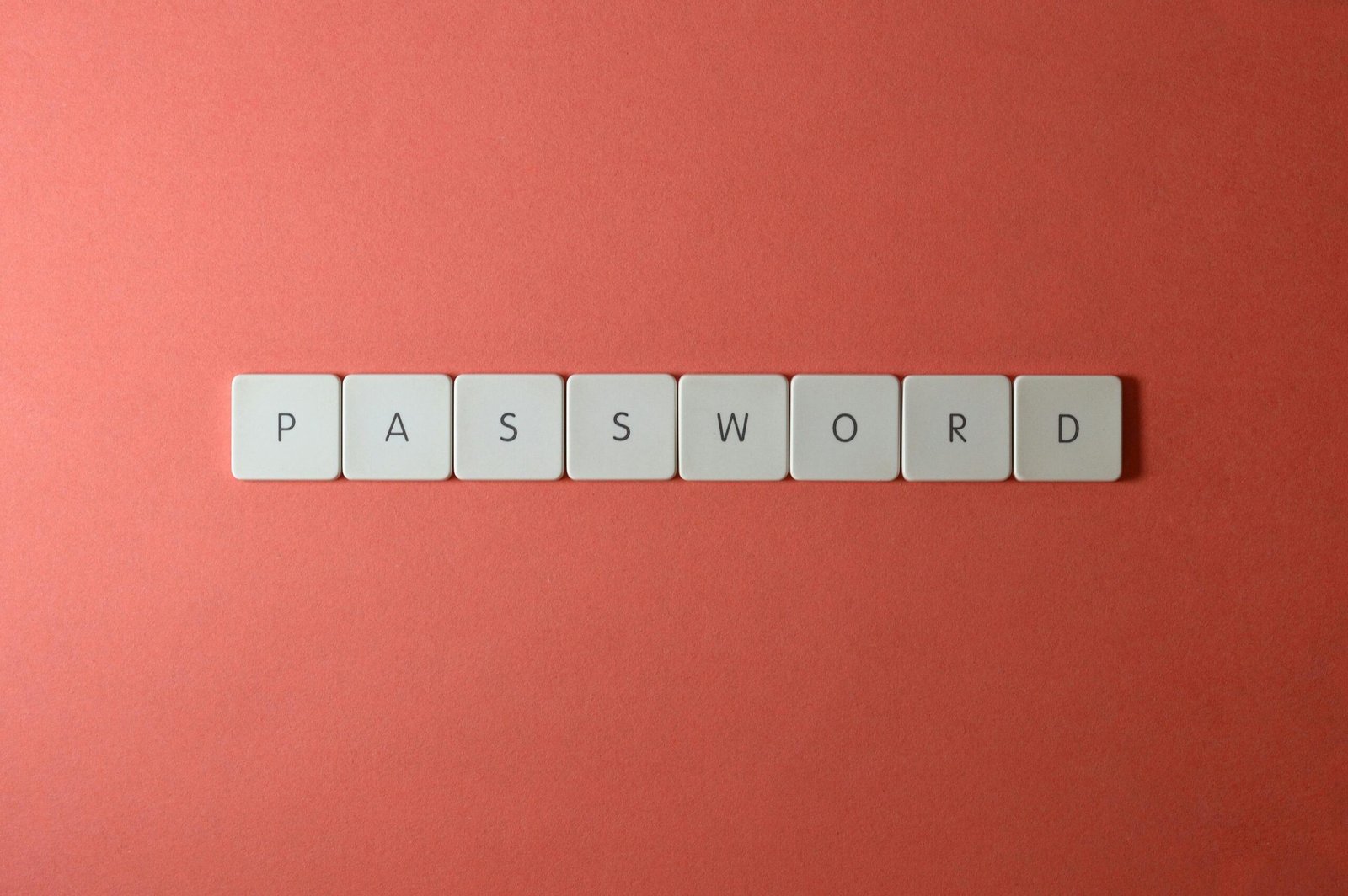How do I create strong, secure passwords?

Introduction
In today’s digital age, protecting your online accounts with strong, secure passwords is more important than ever. Weak passwords can leave you vulnerable to hackers, leading to potential identity theft, financial loss, and privacy breaches. Understanding how to create robust passwords is the first step in safeguarding your personal information.
What Makes a Password Strong?
Creating a strong password involves more than just a random string of characters. Here are the key elements that contribute to a strong password:
Length of the Password
A secure password needs to have a minimum of twelve characters. The longer the password, the harder it is for hackers to crack it using brute force attacks. Aim for passwords that are 14 characters or more if possible.
Complexity and Variety of Characters
Mixing different types of characters enhances the strength of your password. Use a combination of:
- Uppercase letters (A-Z)
- Lowercase letters (a-z)
- Numbers (0-9)
- Special characters (!, @, #, $, %, etc.)
By incorporating a variety of characters, you increase the complexity, making it more difficult for attackers to guess your password.
Avoid Common Words and Phrases
Hackers can more easily decipher common words, phrases, and patterns. Avoid using simple words like “password,” “123456,” or “qwerty.” Instead, use a random mix of characters that don’t form recognizable words or patterns.
No Personal Information
Avoid using easily accessible personal information such as your name, birth date, or any other detail that someone could easily find out about you. Hackers often use this information to make educated guesses about your passwords.
Use Unpredictable Sequences
Avoid predictable sequences such as “abcd,” “1234,” or repeated characters like “aaaa.” Instead, create a password with a random and unpredictable sequence of characters.
How do I create strong, secure passwords?
Common Mistakes to Avoid
When creating passwords, it’s easy to fall into some common traps that can undermine your security. Here are the mistakes to watch out for:
Using Personal Information
One of the biggest mistakes is incorporating personal information into your passwords. Avoid using:
- Your name or initials
- Birthdates
- Names of family members or pets
- Addresses or phone numbers
Hackers can easily find this information and use it to guess your passwords.
Simple Patterns and Repeated Characters
Passwords like “123456,” “abcdef,” or “password” are extremely weak because they follow simple, predictable patterns. Similarly, repeated characters like “aaaaaa” or “111111” are also very insecure. Avoid using any patterns that can be easily guessed.
Short Passwords
Passwords that are too short are easier for hackers to crack. Always aim for a minimum of 12 characters to enhance security. The longer the password, the more time and effort it takes to crack it.
Common Words and Phrases
Dictionary attacks use automated tools to try every word in the dictionary until the correct password is found. Examples to avoid include:
- “Password”
- “admin”
- “letmein”
- “iloveyou”
Reusing Passwords Across Multiple Accounts
Using the same password on many accounts poses a huge security risk. If one account is compromised, all accounts with the same password are susceptible.
Neglecting Special Characters
While it’s easier to remember passwords that consist only of letters and numbers, excluding special characters makes your passwords less secure. Incorporating symbols like ” or “@” increases complexity and makes passwords far more difficult to crack.
Not Updating Passwords Regularly
Failing to update your passwords periodically increases the risk of them being compromised over time. Make it a habit to change your passwords every 3-6 months to maintain security.
Step-by-Step Guide to Creating Strong Passwords
Step 1: Choose a Long Password
Aim for a minimum of 12 characters. Longer passwords are harder to hack.
Step 2: Mix Upper and Lower Case Letters
Combine upper and lower case letters to increase complexity.
For example, instead of “password,” type “PaSsWoRd”.
Step 3: Incorporate Numbers
Adding numbers makes your password stronger. An example is “Pa55WoRd.”
Step 4: Use Special Characters
Integrate special characters like “!” or “@” to further enhance security. Example: “P@55WoRd!”
Step 5: Avoid Common Words and Phrases
Steer clear of dictionary words or easily guessable phrases. Instead of “football123,” try something like “F@otB@ll!23.”
Password Managers: A Helpful Tool
Managing multiple strong and unique passwords for various online accounts can be challenging. They are designed to help you generate, store, and manage your passwords securely.
Benefits of Using a Password Manager
1. Enhanced Security
How do I create strong, secure passwords?
Password managers create complicated, unique passwords for each of your accounts, making them harder for hackers to decipher. They also store these passwords in an encrypted database, protecting them from unauthorized access.
2. Convenience
Remembering dozens of complex passwords can be overwhelming. A password manager allows you to remember just one master password to access your entire password vault, saving you time and hassle.
3. Automatic Form Filling
Many password managers automatically fill up login forms for you, making the login process faster and more efficient. This feature is especially useful for people who manage multiple accounts across different platforms.
4. Synchronization Across Devices
Password managers often come with the ability to sync across multiple devices, including smartphones, tablets, and computers. This means you can access your passwords anytime, anywhere, ensuring you never get locked out of your accounts.
5. Regular Updates
Password managers can prompt you to update your passwords regularly, enhancing your overall security posture. They can also alert you if any of your stored passwords have been compromised in a data breach.
Popular Password Manager Options
Here are some reputable password managers that offer a good balance of security and usability:
1. LastPass
LastPass is one of the most popular password managers, known for its user-friendly interface and robust security features. It offers both free and premium versions, with the premium version providing additional features like emergency access and advanced multi-factor authentication.
2. 1Password
1Password is another excellent choice, especially for families and teams. It offers secure password sharing, travel mode for sensitive information, and comprehensive security reports. It’s available on multiple platforms, ensuring seamless access across devices.
3. Dashlane
Dashlane provides strong security features, including dark web monitoring and VPN services for premium users. It also has a user-friendly interface and can reset many passwords with a single click.
4. Bitwarden
Bitwarden is an open-source password manager with both free and premium options. It is noted for its transparency and robust encryption methods. It’s an excellent choice for anyone who prefers open-source solutions.
5. Keeper
How do I create strong, secure passwords?
Keeper offers a highly secure password management solution with features like secure file storage and breach monitoring. It is particularly suited for businesses and enterprises due to its advanced administrative controls.
By storing your passwords securely and generating strong, unique passwords for each account, you significantly reduce the risk of being hacked. Plus, the added convenience and features make managing your digital life much easier.
Two-factor authentication (2FA)
Two-factor authentication (2FA) adds an extra layer of security to your online accounts by requiring two forms of verification to gain access. This method significantly enhances account security by combining something you know (your password) with something you have (a second factor).
What is 2FA?
2FA is a security method in which the user offers two distinct authentication factors to confirm their identity. This strategy ensures that if one element (such as your password) is compromised, the second factor will still safeguard your account from unauthorised access.
How 2FA Enhances Security
1. Adds a Second Layer of Defense
By requiring two forms of identification, 2FA ensures that a hacker would need both your password and the second factor (such as a code sent to your phone) to access your account.
2. Reduces the Risk of Password-based Attacks
Even if your password is stolen or guessed, the attacker cannot access your account without the second authentication factor. This is particularly effective against phishing attacks, where hackers trick you into revealing your password.
3. Provides Real-Time Alerts
Many 2FA systems send a notification or prompt for verification whenever there’s a login attempt from an unrecognized device. This alerts you to any unauthorized access attempts and allows you to take immediate action to secure your account.
Common Types of 2FA
1. SMS-Based 2FA
A verification code is sent to your mobile phone via SMS, which you then enter on the login page. While this method is better than no 2FA, it is not the most secure option due to the potential for SIM-swapping attacks.
2. Authenticator Apps
Apps like Google Authenticator, Authy, or Microsoft Authenticator generate time-based one-time passwords (TOTPs) that refresh every 30 seconds. This method is more secure than SMS-based 2FA as it doesn’t rely on your phone number.
3. Hardware Tokens
Physical devices like YubiKey or RSA SecurID generate unique codes or connect to your device via USB or NFC to authenticate your login. These are highly secure but can be less convenient than software-based solutions.
4. Email-Based 2FA
A code is sent to your registered email address, which you use to complete the login process. This method is convenient but can be vulnerable if your email account is compromised.
5. Biometric 2FA
Uses physical characteristics like fingerprints, facial recognition, or retina scans as a second factor. This method is very secure and increasingly common with modern smartphones and laptops.
How to Set Up 2FA
1. Enable 2FA on Your Accounts
Most online services, including Google, Facebook, and banking apps, offer 2FA as an option. Go to your account settings and look for security or two-factor authentication settings to enable it.
2. Choose Your Second Factor
Select the type of second factor you want to use, whether it’s an SMS code, authenticator app, hardware token, or biometric verification.
3. Follow the Setup Instructions
For authenticator apps, you’ll typically scan a QR code to link the app to your account. For hardware tokens, you may need to connect the device and verify it.
4. Backup Your Codes
How do I create strong, secure passwords?
Many providers provide backup codes when you set up two-factor authentication. Store these codes in a safe place in case you lose access to your primary second factor.
5. Test Your 2FA
After setting up, try logging in to ensure that 2FA is working correctly and that you understand how to use your second factor.
Implementing 2FA is a simple yet highly effective way to bolster your online security. By requiring an additional verification step, you make it significantly harder for unauthorized users to access your accounts, protecting your personal information and digital identity.
Changing Passwords Regularly
Importance of Regular Updates
Regularly updating your passwords minimizes the risk of long-term exposure if a password is compromised.
Best Practices for Updating Passwords
Change your passwords every 3-6 months and ensure each new password is unique and strong.
Storing Passwords Securely
Physical Storage Solutions
Put your passwords in a secure notebook and put it somewhere safe.
Digital Storage Solutions
Use encrypted digital storage options like a password manager or secure notes.
Recognizing and Avoiding Phishing Attacks
What are Phishing Attacks?
Phishing attacks attempt to trick you into revealing personal information by posing as trustworthy entities.
How to Identify Phishing Attempts
Look for suspicious emails, urgent requests, and unfamiliar links. Always verify the sender’s authenticity.
Using Passphrases
What is a Passphrase?
A passphrase is a sequence of words or a sentence that’s easy for you to remember but hard for others to guess.
Advantages of Using Passphrases
Passphrases like “CorrectHorseBatteryStaple” are long and complex but easier to recall than random characters.
Security Questions: Choosing Wisely
Why Security Questions Matter
Security questions add an extra layer of protection by verifying your identity.
Tips for Selecting Strong Security Questions
Choose questions with answers that are hard to guess and not easily found online.
How do I create strong, secure passwords?
The Role of Biometrics
Understanding Biometric Security
Biometrics uses unique physical characteristics, like fingerprints or facial recognition, to verify identity.
Common Types of Biometric Authentication
Fingerprints, facial recognition, and iris scans are common biometric methods used to secure devices and accounts.
Educating Others About Password Security
Sharing Best Practices with Family and Friends
Teach those around you the importance of strong passwords and how to create them.
Promoting Security Awareness in the Workplace
Encourage your workplace to adopt strong password policies and regular security training.
Conclusion
Creating strong, secure passwords is crucial for protecting your personal information online. By following best practices, using tools like password managers, and staying informed about potential threats, you can significantly enhance your digital security.
FAQs
How often should I change my passwords?
It’s recommended to change your passwords every 3-6 months to reduce the risk of long-term exposure.
Are password managers safe to use?
Yes, reputable password managers use strong encryption to protect your passwords.
What should I do if I suspect my password has been compromised?
Change the compromised password immediately and review your accounts for any suspicious activity.
Can I use the same password for multiple accounts?
It’s best to use unique passwords for each account to prevent multiple accounts from being compromised if one password is leaked.
How do I create a memorable yet strong password?
Consider using a passphrase, which combines multiple words or a sentence that’s easy to remember but hard to guess.




One thought on “How do I create strong, secure passwords?”